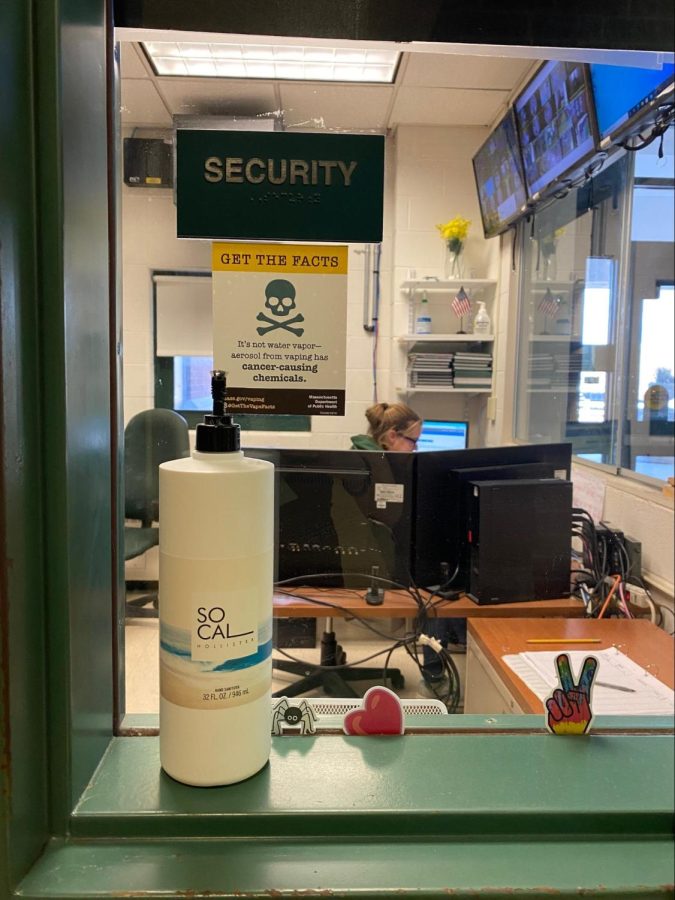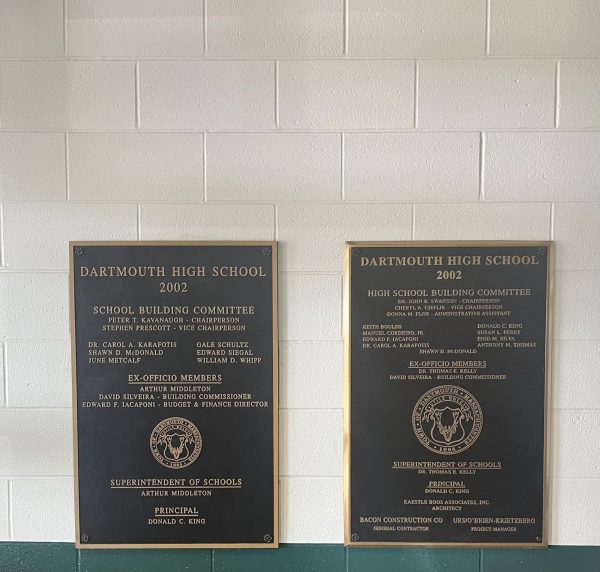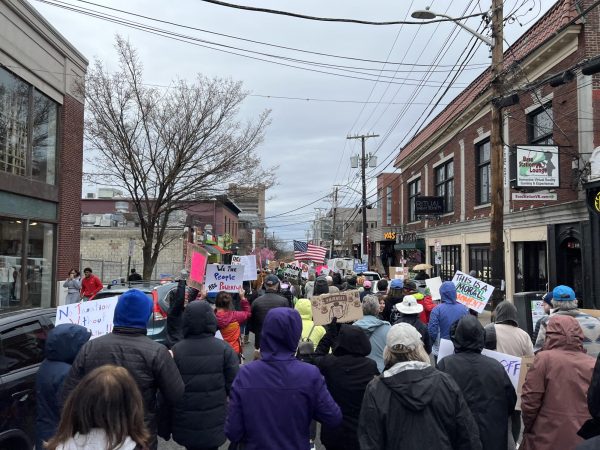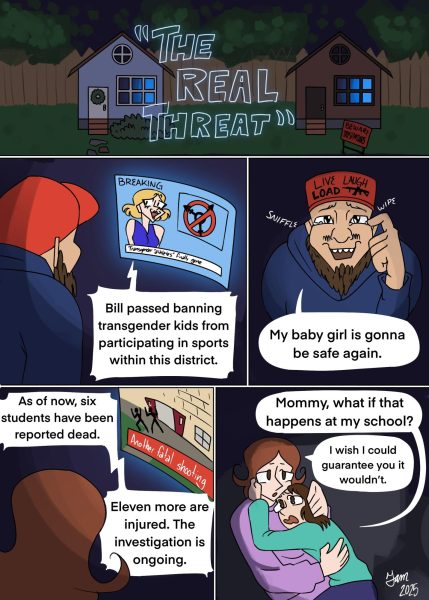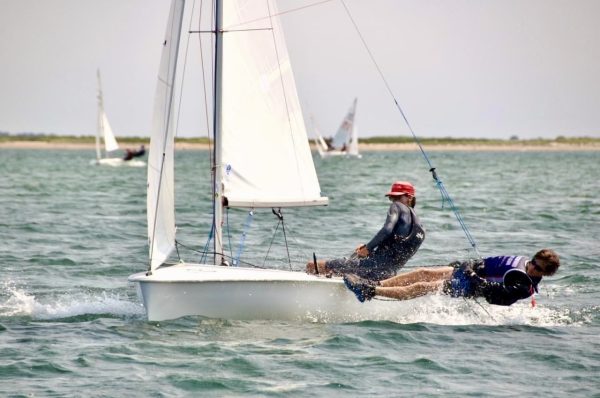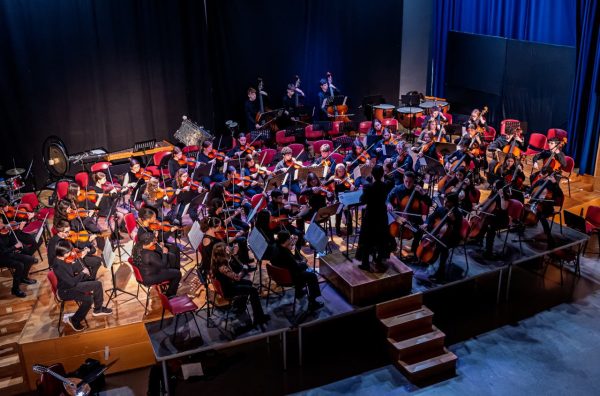Top 5 Questionable Ideas for Keeping Schools Safe
All visitors to DHS must stop and register at the security window inside the main entrance.
Warning: Sensitive topics mentioned in this article including guns and school shootings.
The recent increase in school shootings has started global conversations about how to improve safety. Although this discussion is something that should be taken with utmost sincerity and seriousness, some ideas that have been considered are worth denouncing. It’s important to keep in mind that safety isn’t something concrete. According to Murphy’s Law, if something can go wrong, it will. While a solution may seem foolproof, one must remember that our world is the way it is because of failed ‘solutions.’
1. Arming Teachers
Some of the main reasons why school shootings occur are due to the publicity of violence in our society and the comparably easy access citizens have to guns in the U.S. compared to other countries. In an article published by Virginia Commonwealth University, William V. Pelfrey Jr., a professor in the Criminal Justice Department, discusses these factors in more detail. He writes, “Social media, a component that revolves around how people make it okay on social media to act on violence. There is a faction of government, particularly a right-wing government element, that condones or encourages violence.”
Social media is a powerful thing, a type of information able to be consumed by about 70% of Americans. Even more powerful are ideas, filled with inflamed passion and controversy.
Pelfrey also enlightens readers about the simple process of obtaining a firearm if you’re a legal adult. He writes, “In the U.S., you can walk into a gun store and buy as many assault rifles as you want if you have cash and are over 18 and you meet just a couple of other loose criteria. In most countries there are tests you have to take. You have to demonstrate you need a gun for a specific reason. You have to pass a gun ownership exam to show you can use it safely. You have to maintain license requirements. We don’t do any of that in the U.S.”
By arming teachers with guns, both of these negatively correlated factors become enhanced. Instead of protecting students in a school by removing the same weapon causing the damage, you’re essentially bringing the cause to the possible victims. If every teacher has access to a gun, the possibility of a gun being fired in the school setting increases. If the objective is to remove fear and danger from schools, why make it easier for the concept of violence even more available?
2. Flashbang Grenades
Possibly a replacement solution for arming teachers with guns, flashbang grenades are also an unsafe idea for similar reasons. Why increase access to a weapon that blinds victims and impairs their vestibular sense in a place dedicated to kids ages 6-18 when half of school shootings are done by former or current students? By bringing weapons into the school environment, accessibility to violence by association increases.
Kimberly Strassel, a member of the Wall Street Journal’s editorial board, suggested this approach on Fox News in 2018. She said, “There’s surely some teachers out there who have concealed carry permits. If they want to be more protected in the classroom, should we tell them no? Other ways just for teachers to protect — maybe give them a flash bang or something.”
The biggest obstacle when discussing school safety is the expectation that having weapons in the school environment will go exactly to plan, when in reality it’s just asking for something to go wrong. Weaponizing the historically victimized party does nothing to stop the problem at its origin. It’s ineffective and oxymoronic to militarize children and educators instead of demilitarizing the public and possible offenders.
3. Police Presence
The presence of school resource officers (SROs) has increased already, which begs the question, does this approach actually solve the problem? The addition of SROs into the school environment is assumed to decrease tension and the possibility of violence, but might be doing the opposite.
It’s important to understand that varying treatment of students based on race and their background is a possibility. Chelsea Connery, a doctoral candidate at the Neag School, discusses these considerations in association with the Center for Education Policy Analysis. She writes, “Black youth, Latine youth, immigrant youth, indigenous youth, and youth living in poverty often come to school with harmful experiences with police that may perpetuate racial inequalities in educational, health, and social outcomes. By putting police in schools, we are exacerbating these issues.”
Not all students view police officers as a symbol of safety and care. Differences in perspective and experience are something that impacts the emotional well-being of someone exposed to a certain stimulus. For students who have had or witnessed negative experiences with police, that trauma now becomes a part of their daily school experience.
Also adverse to the goal of increasing police presence, there’s little evidence that supports the correlation between SROs and the expected safety that comes along with them. Connery writes, “Research on averted school shootings suggests that the key is having trusted adults whom other students can inform.” Due to historically backed stigmas against police officers, it’s expected that a student is more likely to confide in a teacher with whom they have developed a close working relationship instead of a SRO.
The main take away from this information is that social connection and trust is a more powerful determinate in transparency between students and administrators than outside enforcement.
4. Increased Surveillance
Recent school shootings and their convicted suspects have been involved with social media and the internet. Showing signs of emotional distress and acting out includes posting things on social media that suggest violence. For example, in Uvalde, Texas, Salvador Ramos, the suspect in the shooting, had messaged an internet friend in Germany, telling her that he had killed his grandmother and was going to an elementary school. He also shared proof of owning two guns on Instagram.
This behavior, in addition to an effort to prevent mental health issues, has resulted in some schools increasing surveillance on school issued devices to monitor activity. While this may seem like a successful protective measure, these systems are proven to be inefficient and insecure. There have been multiple false positives when using these systems, such as reporting students for discussing To Kill a Mockingbird and sensitive language included in the text. Some companies that develop the software used to monitor student technology refuse to publicize how their product is created and what algorithms are used to do its job.
Furthermore, a trend that is clear throughout these proposed solutions, the disproportionate effect on minorities, is present in this solution as well. American schools disproportionately discipline minority students, creating a bias towards these students that interferes with their learning. Constant surveillance demotivates students to share their views and participate in discussion, along with reaching out for help or searching for resources to support them financially.
5. Medical Training and CPR
In 2018, former senator Rick Santorum claimed that students were the ones who needed to be proactive in the battle for safety in school on CNN’s State of the Union. He said, “How about kids, instead of looking to someone else to solve their problem, do something about maybe taking CPR classes or trying to deal with situations where there is a violent shooter?”
Arguably the most concerning take on school safety, putting students lives and futures into their own hands. This idea in general is just astonishing. It redirects blame and responsibility for the safety of minors and children, the world’s future leaders, and completely glosses over the fact that we have gun control issues in America. This stance enables policy makers and the people we’ve elected to make the U.S. safe to pass on an issue that effects about 49.5 million citizens.
Kids in school aren’t supposed to be focused on self-preservation, stressed about whether they’re capable enough to survive if their life was put at risk while at school. School is a place where access to education, support, and safety are supposed to be guaranteed.

